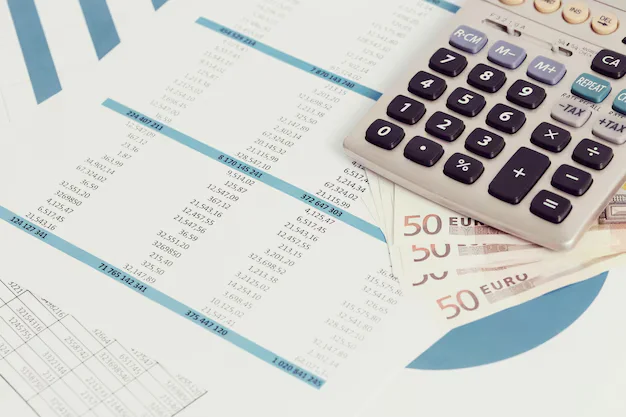



Almost every employee in America looks forward to the arrival of their earnings statement, also known as a paystub. But what exactly is an earnings statement, and how does it work? This blog post, based on our site, will break down your paystub, including payroll deductions and benefits, including how much you should be making, what taxes are taken out of your earnings, and more!
An earnings statement is a report outlining how much an employee has been paid over a particular pay period. It details gross earnings, then lists deductions taken out of your payments for taxes and other withholding purposes. Earnings statements are sometimes also referred to as paystubs. You can easily generate paystubs for your business or company through online paystub generators on our site, ensuring effective payroll management.
The system documents a company's profitability through the earnings statement and shows how much money it made or lost. The earnings statement shows earnings over time so that interested parties may see how the firm is doing during a certain time period. Earnings statements typically show three accounting periods: the current one plus the two preceding ones. The three-period span allows consumers to evaluate the company's earnings changes over time.

The earnings statement and the balance sheet are two distinct financial reports. Balance sheets present assets, liabilities, and equity at a single moment in time, whereas earnings statements present revenue and costs over time. They have several line items and are used to track various elements of financial performance.
A balance sheet summarizes a company's assets, liabilities, and equity in order to evaluate if it has sufficient liquidity to meet its financial commitments. It is a snapshot of the company's financial position at a specific moment in time. In addition, the earnings statement examines revenue and costs over a 12-month accounting period. It shows the company's net profit or loss for that time period. The earnings statement is primarily used to examine if the company has enough earnings to cover its liabilities.

Earnings statements are classified into two types: single-step earnings statements and multi-step earnings statements. The earnings statement, regardless of the form, has five main components.
Sales or revenue: The total amount received through the sale of the company's products or services. It is the sum of all sales or revenue accounts. The phrases sales and revenues may be used interchangeably in the report's top line. Any option is acceptable.
Cost of goods sold: The total amount paid to purchase or manufacture the items or goods sold within the specified time period.
Gross profit: The amount of money produced by a firm before operating expenses, calculated by deducting the cost of items sold from sales or revenue.
Operating expenses: Salary, administrative fees, utilities, and advertising are examples of operating expenditures.
Net earnings or loss: Whether the firm made a profit or a loss during the specified time period, calculated by deducting total expenses from gross profit.
Earnings statements, often known as "profit and loss statements," may have several subcategories and, as a result, many more line items. Yet, the record boils down to revenue, spending, and the difference.
Begin by double-checking the numbers if you've been entrusted with examining an earnings statement. The only math abilities required are addition and subtraction to ensure that the numbers are correctly computed. Whether or not you detect a mistake, adding and subtracting the values will help you grasp how the data go together.
If you're self-employed, login to our site to submit and calculate your earnings statement based on sales. If you're an employee of a company, paystubs should come out every time the payroll is processed, usually monthly or bi-weekly.
Your earnings statement will contain a lot of information about your pay and deductions. They detail how much of your earnings you actually bring home. For employees, it will list gross earnings, then itemize taxes and deductions that have been taken out of payments for the pay period. It's very important to know how your taxes as an employee are deducted.
Your annual income determines the amount you owe in federal, state, and local taxes. Income taxes are usually deducted from your pay. The exact amount withheld for federal income taxes will depend on your earnings and how you file your earnings statement.
Many earnings statements also detail time off and absences for the earnings period. This includes sick days, paid time off (PTO), and other types of absence such as jury duty or bereavement leave. It will detail how many hours you missed from work during the earnings period, then list an earnings loss for that time.
Your earnings statement will also detail how much of your earnings have been paid for healthcare. Employers are required to provide affordable healthcare under the Affordable Care Act, so it will list if an employee has already had their insurance contributions deducted from earnings or if they can pay them themselves.
Paystubs also show benefits like pension contributions and insurance deductions taken out of earnings, listed under payroll deductions. These may include life insurance, medical payments, disability contributions, etc. Depending on an area's unemployment rate, earnings statements can also list unemployment insurance that has been deducted from earnings.
Net earnings are the amount of money you bring home after all deductions have been taken out. This amount is what should reflect on your bank account after your pay has been processed.
Expenses, especially when related to travel, usually only impact self-employed individuals. This may include costs like tools or vehicles used to conduct business. It can also include bonuses paid out by employers during earnings periods, which are known as incentive pay.
It's important to keep earnings statements for tax purposes; you can download these directly from our site in the future. You can use earnings statements when filing taxes or applying for loans in order to provide proof of income ensuring the change in your financial status is well-documented.
Many employees will want to keep their earnings statements for their own records. When you are self-employed, access your earnings statements on our site as documentation of your earnings over time.
This standard format's purpose is to compute profit/income at each subhead of revenue and operating expenses, then account for mandatory taxes, interest, and other non-recurring, one-time events to arrive at net income relevant to common stock. Despite calculations include basic additions and subtraction, the sequence of the different elements in the statement, as well as their connections, can become repetitious and convoluted. Let's take a closer look at these figures to have a better idea.
In most cases, earnings statements will come out on a regular basis for employees. Typically, every time payments are processed. It may vary depending on the company you work for and how often they distribute earnings statuses to their employees.
To sum everything up, earnings statements are very important for employees to know about. They provide detailed information about how much an employee has earned during a pay period. For self-employed individuals, earnings statements play an even more significant role because they make up your revenue.
It tells you exactly how much money you have made (before expenses), and it is the only way to determine whether or not your business was profitable in any given period of time. You can even generate invoices on your own to speed up this process.
Earnings statements are necessary for employees to verify proof of income when applying for mortgages and loans, effective as of the date issued. If you are ever confused about the abbreviations on your paystub, visit our site and click on our article for assistance.